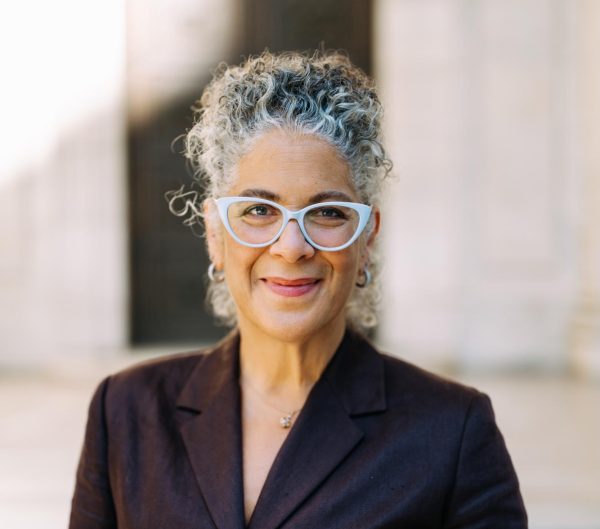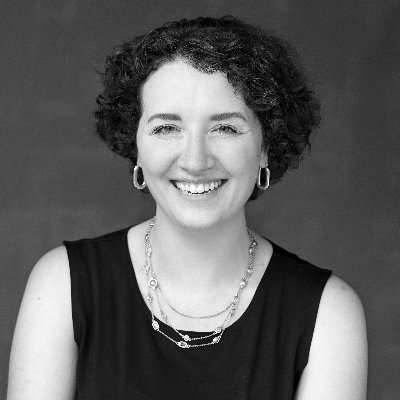Dave Covell, Lorain County Health Commissioner
Dave Covell is the Lorain County health commissioner and is at the forefront of monitoring cases of COVID-19 in Lorain County, working to prevent further spread. Previously, he worked as deputy director for the Cuyahoga County Board of Health and earned his Masters in Public Health from The Ohio State University. Due to recent events, Covell has collaborated with specialized teams focusing on topics like epidemiology and public information to ensure that residents are aware of how best to protect themselves and others during this pandemic. He has also worked closely with Oberlin College and the City of Oberlin to take proactive measures to protect and educate the community. He urges residents to continue practicing standard precautions, including staying at home and washing hands, in order to slow the spread of the virus.
This interview has been edited for length and clarity.
Can you give an overview of what Lorain County has been doing specifically to deal with the pandemic?
We have been in what’s called an Incident Command structure for a little over a month now. That’s really designed to help us handle all the different pieces of what we’re doing, and also not burn out staff, because you can imagine that this is a 24/7 kind of thing. There are some main areas that we handle. First, when we think about the general public, we deal with a lot of public information, kind of like we’re doing here [in this interview]. We also do a lot of work around calls; we have a call center that handles general calls. At the very beginning [of the local outbreak], that general call center did a lot of work around questions such as “What do I do if I start feeling symptomatic?” and other things like that. We had some worried people, but then also people who were preparing. And that call center is now more, “Am I an essential business? Should I be an essential business? Should my business still be open? And then how can my business keep people six feet apart?” We get a lot of general calls like that. As a matter of fact, we’re up to a little over 2,000 calls right now that we’ve had around those kinds of questions.
Then we have the more scientific piece of the puzzle. For every single case that comes in here to Lorain County, we have an epidemiological team that actually contacts that person, identifies who [that person’s recent] close contacts are, and then we quarantine those contacts for 14 days. We can kind of slow the virus down by quarantining these other folks, and then we hand those individuals off to a group of nurses who call every single person in quarantine once a day for 14 straight days. If they don’t show any symptoms, then after that time period they’re out of quarantine. Then we have another group that is connected with the hospitals to talk through how the case is doing, as well as what other sensitive pieces we need to worry about with the case. [For example,] are they a medical worker? Are they in EMS or police or something like that? What other connections can we look at — are they in a nursing home or another setting that would cause more of a concern for us in terms of spread? So we have a whole team that handles that.
For every single case that we have after that, we also connect with community partners. I have a conference call with the police, the fire department, superintendents, mayors, and all the other players in the community. We also have our public information officers [who are] connected with mental health services and other groups to help the other pieces of this puzzle. We’re handling mostly the medical piece and connecting with the hospitals and trying to solve that problem.
I’m curious about the Incident Command structure. In any crisis, you have to deal with communicating with the state and with all these organizations and teams while also producing rapid action because you’re dealing with an ever-changing situation. Can you speak a little bit about how the communication structure works?
Yeah, so the best part about Incident Command — other than allowing people to get a little stress relief — is that you have an incident commander, an operations chief, a logistics chief, all the groups that get together. … So one person doesn’t have to lead the whole charge. We can divide up the work and actually get stuff done quickly. Right now, our epidemiological team, within an hour of getting a case, we’ve identified almost every contact. And so that speed of identifying those contacts and getting them in quarantine can really slow the spread.
Can you speak to Lorain County’s decision to not release case information by zip code?
When it comes to sensitive scenarios like a nursing home or somewhere else, [location] could really have an impact, but geography doesn’t actually have an impact. Let me give you an example. Our neighbors next door, Cuyahoga [County], have a map that Cleveland.com has put out. The problem with it is it appears that if you live on the west side of Cuyahoga, you’re in less danger than if you live in certain communities on the east side. That’s completely false — the reason why [that pattern is seen] is that it’s mostly associated with how many people you have in the medical profession in your community because they’re the ones who get tested. With the limited testing that we have, we’re only looking for people who are either extremely ill or in a sensitive occupation that are symptomatic. We want to make sure those [health care workers] can get back to work, and so those are the people being tested. Unfortunately, those confounding factors make that geographic data kind of a blatant lie, and so we should not be doing that.
The concern I have is then, if you have a community that has one or two cases, they may think, “Well, it’s a lot safer here. I don’t have to stay home. I don’t have to worry because we don’t have any cases, whereas some other part of our community has more.” And that’s just not true, and it’s really counterproductive to what public health is trying to do. That’s really why we’re trying to say that it doesn’t make sense to report [case information by zip code]. Now here’s the thing, I’d have to create that document, right? And it wouldn’t be created for public health reasons — I’d have to create it just to keep the media happy. Frankly, if it comes to keeping people safe or keeping the media happy, I’m going to pick keeping people safe every time. And that’s why we’re doing what we’re doing.
Are there any plans in the works to provide additional funding for support facilities, such as free clinics, that provide free or reduced health care services?
Right now there’s a lot of work around helping Lorain County Health & Dentistry and other places like that, where they’re actually trying to provide service for folks that they do every day and provide those services in a safe way. If we had immunizations or something like that … we are actually trying to come out into the parking lot to have a look — kind of a drive-through scenario — so that we have less exposure. We’re doing that. We run the WIC program here — [a food assistance program for] women, infants, and children — and in order for them to get food, they have to actually swipe their card. Unfortunately, the state of Ohio’s system and the federal system do not allow for just electronic transfer. People actually have to physically swipe their card. So we’re actually doing that in the parking lot and other areas where we can isolate folks but they can still get the food that they need.
Currently, half the syringe exchange programs in Ohio are closed due to COVID-19. What is Lorain County doing to support individuals that require methadone and naloxone, and how will syringe exchange programs and clinics in Lorain County be able to ship extended take-home doses to patients?
We do not have a Suboxone [a brand-name drug used to treat opioid addiction] program here, in terms of working with the health department. So if you look at The LCADA Way and other areas that deal with recovery, they are actually doing some abbreviated things in their facilities to try to help people, but some of it is through Zoom and Skype. When you look at naloxone, though, we are still able to get naloxone [to people]. That is one of the limited things we’re still doing. If people contact us, we have an isolated area where we can actually do this and still make sure that they get naloxone so that they can keep people from dying, which is an important piece. In terms of the needle exchange in general, it’s on pause right now. We are looking at a new location for that here in Lorain County, but we were [doing that] right when this hit. So that’s probably not going to get up and running again for a few months.
What recommendations are in place to prevent the spread of COVID-19 amongst prison populations, specifically within the Grafton Correctional Institution?
We’ve had some contact with them. We arranged a conference call to talk through that — and not just with them, but also with the jail and other areas. They have a plan for exactly how to isolate folks, and how that would look — including employees and people who are there. We’ve been working closely with them to try to make sure that that’s handled properly. If there is a scenario where someone comes back positive, then they would actually need to isolate and quarantine, and we’d still be involved in that. Luckily, we have not had that scenario in any of our facilities at this point.
On Monday, the claim that abortion facilities were non-essential was overturned, so now they can remain open. How soon will this change be in effect, and how is Lorain County working to keep citizens updated with the latest regulations regarding essential care?
We haven’t had any calls regarding this at the moment. But in terms of essential services in central businesses, we actually have calls every day. We’ve answered about over 2,000 calls at this point. As those calls come in, we take into consideration what’s essential and what’s not. In most cases, we consider medical services essential. Any medical piece, we would refer to that particular location for them to decide what they are going to continue to provide. We’re not going to [recommend] non-required surgeries right now, but the doctor and the patient need to make that decision. … Any medical scenario would be handled in that way.
You mentioned that health care workers tend to get tested more, and a Morning Journal article recently reported that about 50 percent of cases are health care workers. How much of a priority is having people get tested rather than just having them follow guidelines to quarantine themselves and stay home?
If somebody has light symptoms, they’re not going to be tested. Frankly, they need to stay home and they need to make sure they’re not spreading it to their family, let alone their neighbors. So that’s really the most important message: If you have light symptoms, assume you have it and stay home, cover your cough, wash your hands, and again, please try to not infect your family. And certainly don’t go out in the neighborhood because, again, you could be in a scenario where you’re actually causing more of a problem.
Consider a younger person who has light symptoms and doesn’t work in the medical field — they’re probably not getting tested. But a younger person with symptoms who works in a nursing home, or a hospital, they are getting tested. That’s why you have more folks coming in that are positive from the [health care] field. The other thing is these medical folks are the ones putting themselves in harm’s way, and I think there needs to be a greater appreciation for these folks every day going out there and taking care of our community. My board is about to pass a resolution honoring all the hard work that medical people are doing in this community. I think we need to all be thinking about that. Normally, police and firefighters are on the front lines — well, now it’s medical folks, and we need to give them the kudos that they deserve.
In what capacity has Oberlin College engaged Lorain County Public Health, and how does Oberlin as a community compare to similarly-sized communities in Lorain County?
This all started earlier than people think it did, in late January. We really started working closely with Oberlin College because people were coming back from break, and some of them actually are from China and from areas that [had high infection rates]. We were actually working on this quite a bit with the College, and they’ve been very proactive on this. … They’ve pretty much taken all the precautions that they’ve gotten from [Centers for Disease Control]. So they’ve been fantastic. The City of Oberlin itself — the city administrators — and quite often the police and the fire [departments] are connected with us.
We’ve talked through a lot of the other issues. We don’t really talk about how many cases are in each community for the reasons that I talked about before. But we do know this virus is spreading in our community right now. And so the more we can do to stay at home, cover your cough, wash your hands, and please try not to spread this to your family or your friends, the better. I think that’s really the most important thing.
Is there anything else you’d like to add?
I would say this: April is a really important month. These next three to four weeks are going to be really, really important. I know it’s stressful. I know it’s difficult. I know you want to be out there. It’s beautiful out. I get it. But please, this is the time we all need to act together so we can slow this thing down.









